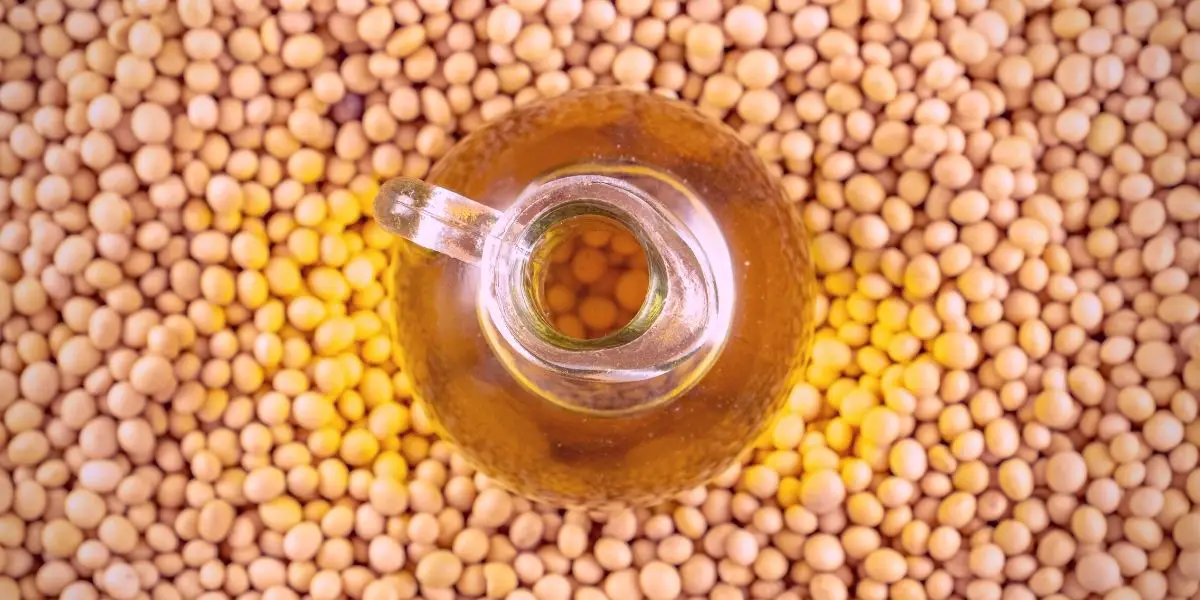Looking for a neutral-tasting oil with a high smoke point to pop your popcorn? Look at how to make popcorn with soybean oil for another option to add to your repertoire.
Soybean oil may not sound like an excellent option for popcorn flavor, but it can be a good choice if you’re looking for a higher smoke point oil with a neutral flavor.
There’s more than meets the eye when it comes to soybean oil. You may be surprised at the benefits in particular.
How to Make Soybean Oil Popcorn
Here’s what you’ll need:
- 3 tablespoons soybean oil (choose an organic version that’s free of chemicals such as hexane, such as US Organic’s bulk soybean oil)
- ⅓ cup popcorn kernels
- Salt
- Additional toppings, if preferred
And here’s how to do it:
- Heat the oil over medium-high heat in a large saucepan (remember, the popcorn will expand by a lot as it cooks); heat until shimmering.
- Add 3-4 kernels to the oil to gauge the temperature.
- Once the test kernels pop, add the rest of the kernels in a single layer.
- Cover the pan with a lid, turn off the heat and allow the temperature to even out (wait about 30 seconds).
- Return the heat to medium-high and tilt the lid slightly once the kernels start popping. This will allow some steam to escape, avoiding soggy popcorn.
- Shake the pan gently while the kernels pop, and remove from heat once the pops are about 2-3 seconds apart.
- Remove the lid and transfer the popcorn immediately to a separate bowl.
- Toss with salt and any preferred additional seasonings.
Since soybean oil has a bland taste, adding some additional toppings can go a long way.
Here are some great ideas for add-ons:
- Make it cheesy
- Buttered popcorn (the method is for microwave popcorn, but you can quickly adapt to use homemade if you prefer)
- A variety of salt substitutes
- Make it adventurous with hot sauce
What Are the Benefits of Using Soybean Oil to Make Popcorn?

As with many other oils, there are both benefits and disadvantages to using soybean oil to make popcorn. Vegetable oil is made primarily from soybeans, which applies to soybean and vegetable oils.
Here are a few benefits of popping your popcorn using soybean oil:
- Soybean oil is a great budget option. It’s much less expensive than higher-quality olive, avocado, and coconut oil options.
- Soybeans aren’t all bad, as their reputation entails. They contain protein, antioxidants, vitamins, and minerals that benefit the body.
- Both soybean and vegetable oil have high smoke points, which is excellent when making popcorn. The smoke point of soybean oil is 460F, which is significantly higher than olive oil (375-405F) and coconut oil (350F). It isn’t relatively as high as avocado oil (520F), but still pretty high.
- These oils have a neutral flavor, so you can add whatever else you want without those flavors competing with each other. If you want the oil flavor to come through, this isn’t your best choice, but if you’re adding other components, this can be helpful.
Not All Soybean Oil is Equal
When purchasing soybean oil, pay attention to the nutrition labels to ensure you’re not getting something harmful. What you’re looking for is non-hydrogenated soybean oil. The hydrogenated versions will have trans fats, carcinogens that are very harmful to your body.
Hydrogenated oils are created because they have longer shelf lives than non-hydrogenated versions, so keep this in mind when purchasing. Make sure you check the expiration date so you don’t end up with a large amount that won’t last.
Better Alternatives to Soybean Oil
If you want the best of all worlds with an oil that has a high enough smoke point for cooking popcorn, has a neutral flavor, and is healthy, there are better alternatives to soybean oil.
Here are the best oils to use for popcorn with these three benefits:
- Coconut oil – the smoke point is lower than soybean oil, but it’s still high enough to pop your popcorn effectively without burning. Plus, it’s very healthy and neutral-tasting.
- Avocado oil – this one is also neutral, incredibly healthy, and has a high smoke point. It’s a little more expensive than coconut oil, but it can also be used for many other cooking methods, such as sauteeing and frying.
- Olive oil – similar to coconut oil, the smoke point here is lower than other options but high enough to make a great bowl of popcorn. It’s high in monosaturated fats, which are great for health, so it’s a good option if that’s a priority for you.
There are also many other oils you could use. These just happen to be favorites.
Umami Popcorn With Soybean Oil
Are you seeking a soy flavor for more of a savory type of popcorn? Soybean oil won’t give you that, but soy sauce will. You could use soybean (or vegetable) oil and soy sauce for some excellent umami flavor.
Here’s a great recipe from Kikkoman for umami popcorn using both.
First, you’ll need:
- 2 tablespoons unsalted butter
- 1 tablespoon soy sauce (preferably low sodium)
- 2 tablespoons non-hydrogenated soybean (or vegetable oil)
- ⅓ cup popcorn kernels
- 1 tablespoon toasted sesame seeds
And here’s how to do it:
- Melt butter in a small bowl in the microwave (roughly 20 seconds). Add soy sauce, then set aside.
- Add oil to a medium-sized pot over medium heat. Cook popcorn according to package directions, or take a peek at our vegetable oil method linked above.
- Once the pops start to space out by 2-3 seconds, remove from heat and transfer to a large bowl. Drizzle the soy/butter mixture over the popcorn to coat it evenly.
- Sprinkle sesame seeds over the top, tossing gently.
What is the Ratio of Oil to Popcorn?
When cooking popcorn on the stovetop, you can use about one tablespoon of oil for every eight servings of popcorn. It doesn’t sound like it would be enough, but a little goes a long way. This is just to cook the popcorn and add a little flavor.
When it comes to oil to popcorn ratio, if you want more flavor, you can drizzle more on the warm popcorn once it’s done popping. Even just one additional tablespoon can add a lot of extra flavor.
Remember, you don’t need to use the same oil for popping and drizzling. For example, you could use avocado oil for the popping since it’s pretty healthy and has a high smoke point. But, since it has a neutral flavor, you could drizzle some melted butter-flavored coconut oil on top after popping it for added flavor.
Soybean Oil for Popcorn
Soybean oil can be a sound choice for popping popcorn when you need a budget option that doesn’t have a strong flavor and has some health benefits.
Does it sound like a sexy option versus olive, avocado, or coconut oil? Not so much. But remember, it can be a great low-calorie option to pop your popcorn, then you can add something else at the end for more of a flavor effect.
FAQs
Does popcorn have soy?
Popcorn is typically made from dried corn kernels, which do not contain soy. However, some commercially prepared popcorn products may contain soy in the form of added ingredients, such as soybean oil or soy lecithin, which are commonly used as emulsifiers and to improve texture.
If you have a soy allergy or are avoiding soy for other reasons, it is important to read the ingredients list on popcorn packaging or ask the manufacturer or seller about the ingredients used in their products.
Sources
https://www.howtomakepopcorn.com/
https://kitchenseer.com/
https://cookieandkate.com/
https://kikkomanusa.com/






